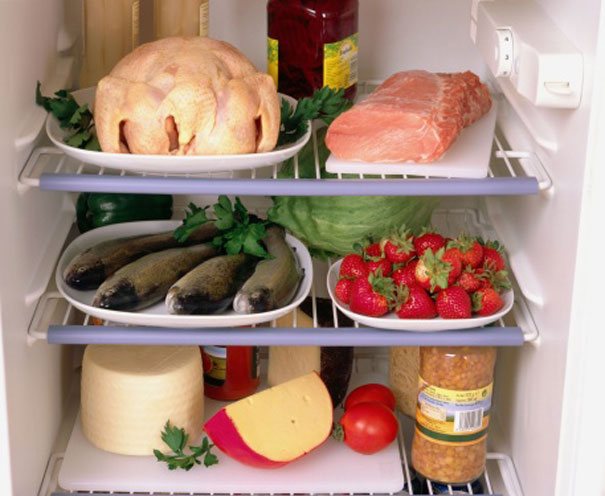Power Outages and Food Safety

The woes of weather-related power outages
How long will perishable foods stay safe once the power is off? Here’s a general guideline from Canada’s Food Safety Network (FSN).
Food safety 101
To inhibit the growth of bacteria and other microorganisms, the refrigerator temperature should be no higher than 4°C (40°F) and the freezer should be -18°C (0°F) or below. A power outage can cause temperatures to rise above these levels within a few hours, making meat, poultry, fish, milk and eggs unsafe to eat.
If you do lose power, your refrigerator should keep food at or below 4°C (40°F) for four to six hours, depending on the kitchen temperature, age of the refrigerator and the number of times the door is opened. Food in a full freezer should remain frozen for 48 hours, and 24 hours if the freezer is half-full.
During an outage, be sure to:
— Make a note of the time the power outage started.
— Keep the refrigerator and freezer doors closed as much as possible.
— Use a thermometer to track the temperature.
— Use bags of ice or gel packs from your freezer to help keep foods cold.
Note about storing food outdoors: Even if it’s cold, food can start to thaw under the sun’s rays. Use a raccoon-proof container and a refrigerator/freezer thermometer to make sure the temperature remains under 4°C (40°F).
Refrigerated foods: What to toss?
Discard food that has been at temperatures above 4°C (40°F) for more than two hours. This includes:
— Fresh or leftover meat, poultry, fish, and shellfish
— Deli meats, hot dogs, and bacon
— Eggs, custards, puddings, and cookie dough
— Soft cheeses, low fat cheeses, milk, cream, sour cream or yogurt
— Prepared infant formula and opened baby food
— Fish sauces, Hoisin sauce, creamy salad dressings, opened spaghetti sauces
— Cut fruits and vegetables, cooked vegetables, opened canned vegetables and vegetable juices
— Casseroles, soups, stews, gravies, cooked pasta, cooked rice, cooked cereals, pizza
— Cooked leftovers
Note : Commercial mayonnaise, tartar sauce and horseradish should be discarded if it has been above 10°C for over 8 hours .
Refrigerated foods: What to keep?
Foods that can safely be stored above 4°C for a few days include:
— Ketchup, relishes, olives, jams and jellies, mustard, barbecue sauce, soy sauce
— Fruit juices
— Vinegar-based salad dressings
— Bread, rolls, bagels, cakes (without cream or custard), cookies and muffins
— Certain hard cheeses such as cheddar, Swiss, Parmesan and Romano. Also processed cheese
— Butter and margarine
— Whole non-cut fresh fruits and vegetables and mushrooms.
The deal on frozen foods
Food in the freezer can be refrozen so long as the temperature of the freezer remained at 4°C or below. If a thermometer was not kept in the freezer, be sure to check each food package individually. Generally speaking, if it still contains ice crystals it can be refrozen — and if it has thawed, throw it away.
Exceptions include breads, cakes (without cream or custard), cookies, waffles, pancakes, fruits and fruit juices. These items can be refrozen even if they have thawed.
Other tips
— Harmful bacteria can multiply in food without causing the food to appear or smell bad. Never taste food to determine its safety. Throw away all food items that look slimy, mouldy or discoloured.
— If raw food has leaked in the refrigerator or freezer, first wash the area with hot, soapy water. You can sanitize the surface by using a mixture of 5 mL (1 tsp) unscented chlorine bleach in 750 mL (3 cups) of water (that is safe to drink). Rinse and allow it to dry completely.
— If you’ve been alerted that the municipally treated water in your area is unsafe to drink, you can disinfect water by bringing it to a vigorous boil for 1 minute. (For more information, click here.)
But perhaps the most important tip of all: When in doubt, throw it out!
SOURCES
Food Safety Network
Canadian Food Inspection Agency.
Health Canada
U.S. Food Safety and Inspection Service